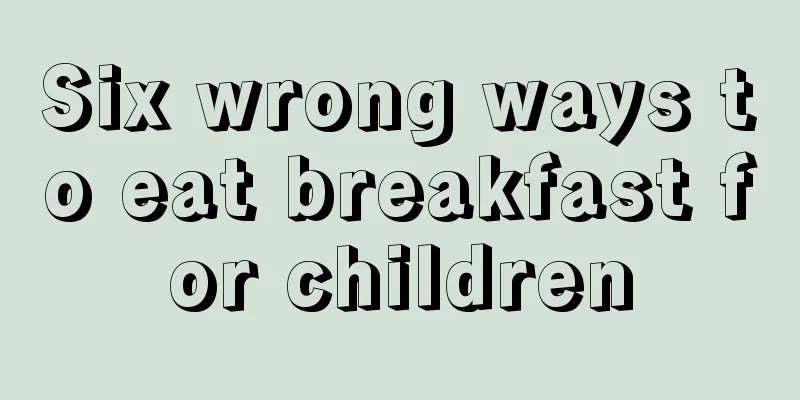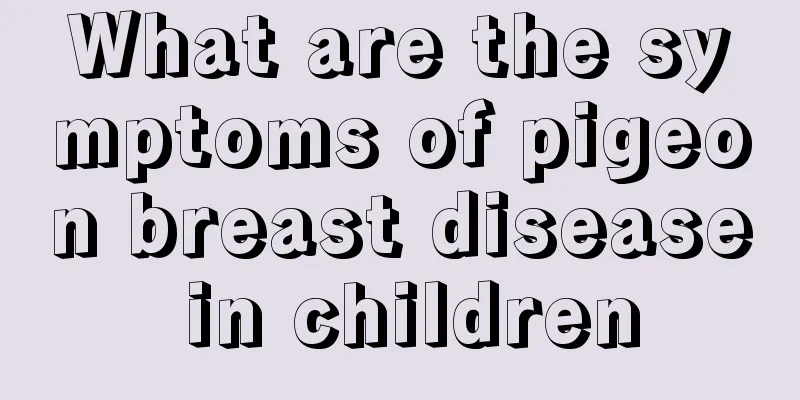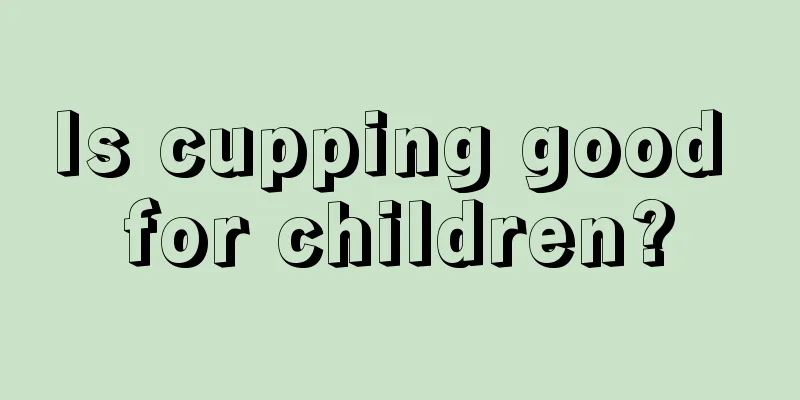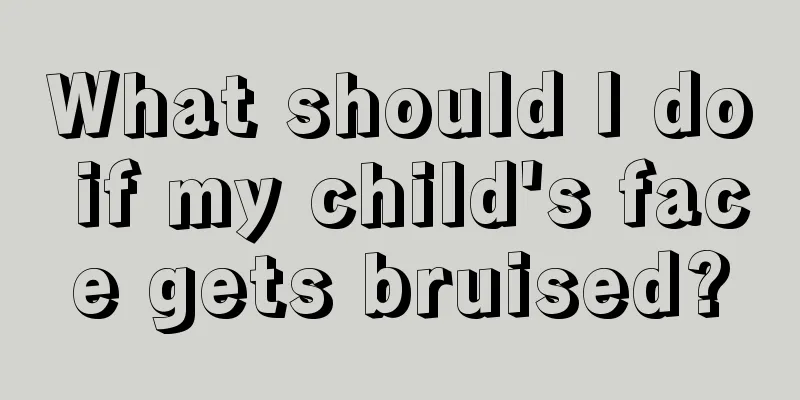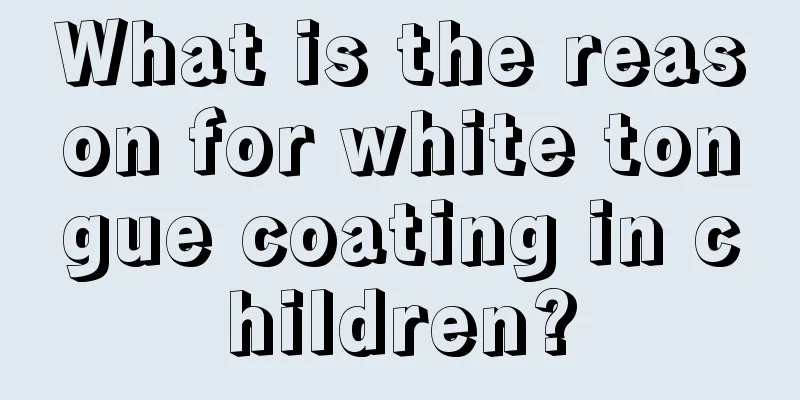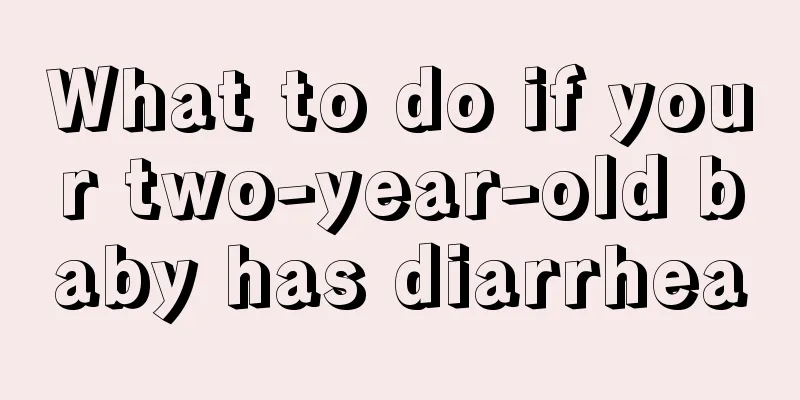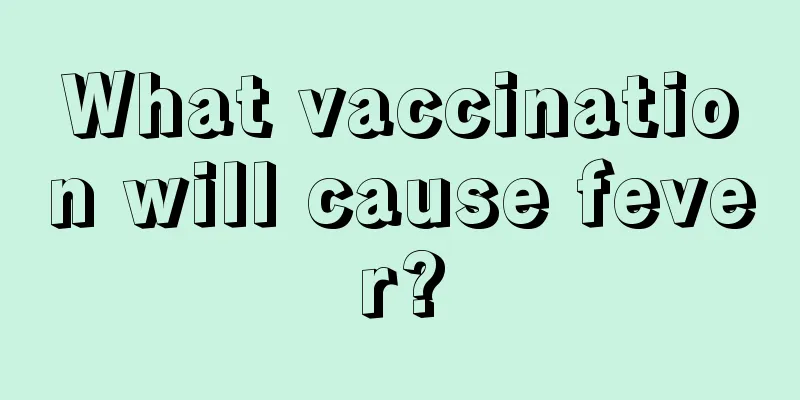How to relieve a child’s fever of 39 degrees?
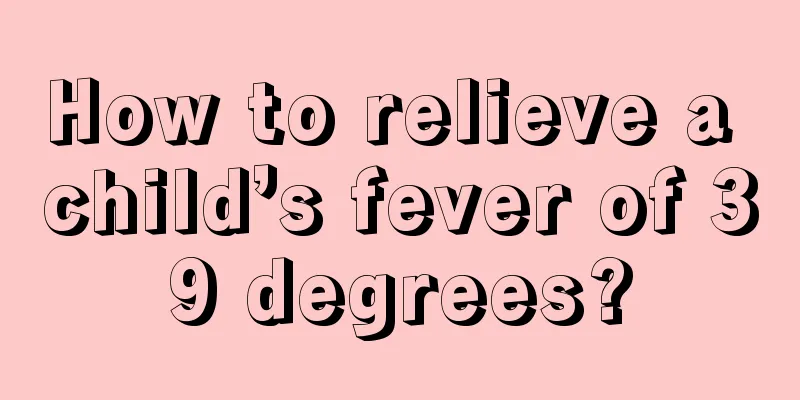
|
Recently there was a report in the UK that a child had a high fever of 39 degrees. The parents were very worried because the child was too young and they did not want to give the child injections or medicine. As a result, they used physical cooling methods. They used medical alcohol to wipe the child's body, but the child ended up being poisoned and died. However, they did not use industrial alcohol but medical alcohol, which proves that medical alcohol also has risks. Physical cooling method is not the first choice for reducing fever. So what is the best way to reduce fever for children with high fever? What should I do if my child has a fever? As long as the child is not in a very bad mood when having a fever and the temperature does not exceed 39.5℃, parents can handle it themselves. There is a pattern when a child has a fever: if the child's hands and feet are cold and the face is pale, it means that the child's body temperature will continue to rise; if the child's hands and feet become warm and he sweats, it means that the body temperature will not rise any further. There are several ways parents can deal with their children's fever: 1. For infants under one and a half years old, the anterior fontanelle has not yet completely closed. Parents can cover the child's anterior fontanelle with the palm of their hand after the child falls asleep, and continue to cover it until the child's head sweats slightly. At this time, when looking at the baby, you will find that the nose is unblocked, the breathing is steady, and the temperature has dropped. At this time, parents can wake up the baby and feed him more warm water or brown sugar water, and the baby will soon recover. My son had several colds and fevers before he was one year old, and I used this method to cure them. The shortest time only took 15 minutes, and the longest took me an hour and a half. My hands were numb, and then I saw sweat on my son's head. Therefore, when covering the baby's anterior fontanelle with the palm of your hand, parents must not be anxious. It is best for the child's father to do it, as men have high temperatures and babies are prone to sweating. 2. Most children's fever is caused by colds. When they have a fever, their hands and feet are cold, their tongue coating is white, their face is pale, and their urine is light in color. Parents can use ginger and brown sugar water to dispel the cold for their children, and the effect is good. If 2 to 3 pieces of green onion cut into one-inch long pieces are added to the ginger and brown sugar water, the effect will be better. If the child is afraid of spicy food, you can add two slices of ginger, two pieces of green onion, and a few drops of vinegar to the porridge for the child. After cooking, remove the ginger and green onion and feed it to the child. It can dispel cold, induce sweating, and reduce fever. The effect is good, and children are willing to eat it. Parents can feed their children 2 to 3 times a day. Do not add onions after the child's fever subsides. Ginger can also be omitted when the tongue coating is no longer white. 3. If the child's hands and feet are not cold when he has a fever, but his face is red, his throat is swollen and sore, his tongue is yellow or red, his urine is yellow and has a strong odor, and his eyes are red, it means that the child has a lot of internal heat in his body and he cannot drink ginger and brown sugar water. Parents should let their children drink plenty of warm boiled water. You can also add a small amount of salt to the water to make it light salt water for the child to drink, which can eliminate internal heat. Only if children drink plenty of water and urinate more often, allowing the internal heat in the body to be discharged with urine, will their body temperature drop and the symptoms of getting a fever improve. 4. If the child has a fever both during the day and at night, it means that there is internal heat or inflammation in the body. Parents can cut the bitter gourd into thin slices, take 10 slices, add water and boil for 5 to 10 minutes, then give it to the child to drink, 2 to 3 times a day. When the child no longer has a fever during the day, stop drinking it. At the same time, try to let your child drink more water, eat fresh fruits, and have a relatively light diet. He cannot eat fish or shrimp, and can only eat other meats and vegetables. 5. If the child's body temperature is normal during the day, rises in the evening and subsides in the morning, it means that the child's fever is caused by severe cold and deficiency in the body. At this time, the child should still be given ginger, brown sugar and onion water. It is best to soak the feet in mugwort water to dispel the cold. The child can also drink broth and light chicken soup. The Guyuan paste can be taken twice a day, half a spoonful each time, to supplement the child with nutrition in time. At the same time, let the child drink more water. 6. For children over 2 years old, parents can help them massage. First rub the soles of the child's feet to draw the heat downwards. After the feet are warm, rub the calves, up and down. After the calves are warm, rub the child's hands, arms, back and ears. Finally, rub the Baihui point in the center of the top of the child's head. Parents should not use too much force when massaging their children. They should rub gently and not too fast. They should rub slowly and gently. They should not be in a hurry. While rubbing, they should let the children drink more warm water. If the child's fever does not go away, wipe the child's entire body with warm water, rub the child's skin with a towel until it turns red and warm, and let the child's body dissipate the heat on its own. If the child still has cold hands and feet, it means that he has caught a severe cold. Parents can give the child ginger, brown sugar and scallion water to drink several times in a row. After this treatment, the child's temperature will most likely cool down. Parents need to note that when drinking scallion, ginger and brown sugar water plus massage to treat fever, they should drink the scallion, ginger and brown sugar water first and then massage. Once, a 5-year-old boy caught a cold and had a fever due to being exposed to air conditioning, and I taught his mother this method. Three days later, the child's mother came to see me. She said that after she massaged the child according to my method, the child's fever subsided. Even if the child had a fever three times in a row a day, massage was effective. But later she found that the child was a little short of breath, so she hurriedly took the child to the hospital for infusion. I asked her, have you given your child ginger and sugar water? She said no. I said, the child clearly caught a cold due to being exposed to the air conditioner, you should first remove the cold from the child, warm up the child's whole body and then massage the child. If you just massage the child and massage too much, the child will easily become qi deficient. In this way, the child will have cold in the body, and at the same time will cough and have qi deficiency, so he will naturally wheeze. The treatment on the second day is very critical. If it is cured, the condition will not rebound and the child will not have a fever again. However, if the child's body has too much cold and dampness and has not been completely eliminated, the child will have a fever again after the afternoon. The above mentioned children’s fever can be handled by parents themselves, but in some cases the child must be sent to the hospital. If a child has a cold or fever and develops certain symptoms, should he be taken to the hospital promptly? 1. High fever above 39.5℃. 2. The child can no longer drink water or has seizures. 3. The child is in poor spirits, sleepy or difficult to wake up. 4. The child has a wheezing sound when breathing. 5. After a cold, a child's breathing speeds up (infants under 2 months old breathe ≥ 60 times per minute, children from 2 months to 1 year old breathe ≥ 50 times per minute, and children from 1 to 4 years old breathe ≥ 40 times per minute), which may cause mild pneumonia. 6. The child's breathing speeds up and upper chest retraction occurs (referring to the depression of the lower chest wall when the child inhales. This is due to the poor elasticity of the lung tissue and the difficulty in inhaling. If only the soft tissue between the ribs or above the clavicle collapses when the child inhales, it is not chest retraction). This feature indicates that the child has obvious breathing difficulties and may have severe pneumonia. Fever is the result of the battle between the human body's defense system and foreign invading pathogens. The higher the fever, the stronger the body's resistance ability, but it does not mean that the disease is more serious. Infants and young children under three months old have not yet fully developed immune functions and weak resistance, so even if they have severe pneumonia, they rarely have a high fever. Everyone knows that if a child has a high fever for a long time, it can easily cause blindness or deafness. Therefore, if a child has a high fever, he or she must be treated in time. Do not take medicine at home at will, and do not withhold injections or medication for fear that the baby's detoxification ability is poor. Pay more attention to your baby's health in daily life. |
<<: What should I do if my child often has a fever?
>>: What should I do if my child has a cold and fever?
Recommend
Children's fever-reducing folk remedies should be used reasonably
It is very common for children to have a fever, b...
Why do babies love to yawn?
Everyone knows that babies need much more sleep t...
How to treat blisters on baby's feet
If the baby has blisters on his feet, parents wil...
What to do if your baby's nails grow too fast
Children are adults’ treasures, and little childr...
What is the matter with the child breathing heavily?
Some parents find that their children breathe hea...
Early symptoms of foot-mouth and hand disease in children
Hand, foot and mouth disease is a very common dis...
What should be paid attention to when five-year-old children lose their teeth
Teeth are very important to each of us. Children&...
Why does a child have a high fever that won't go away?
Usually children are particularly prone to catchi...
Five types of food that harm your baby's brain, parents should know
As we all know, foods such as milk, fish, carrots...
Which acupoints should be massaged for children with nasal congestion?
Each of us will inevitably have some minor illnes...
7-year-old weight loss diet three meals a day
Losing weight has become a major goal that many p...
How to improve the attention of children with ADHD? ADHD training methods
What children with ADHD need to improve is their ...
What are the benefits of giving probiotics to babies?
Many mothers must have heard this sentence: in ad...
What to do if your baby coughs every morning
For example, many babies cough every morning, so ...
What are the symptoms of excessive liver fire in children?
The liver can play a substantial role for the hum...

